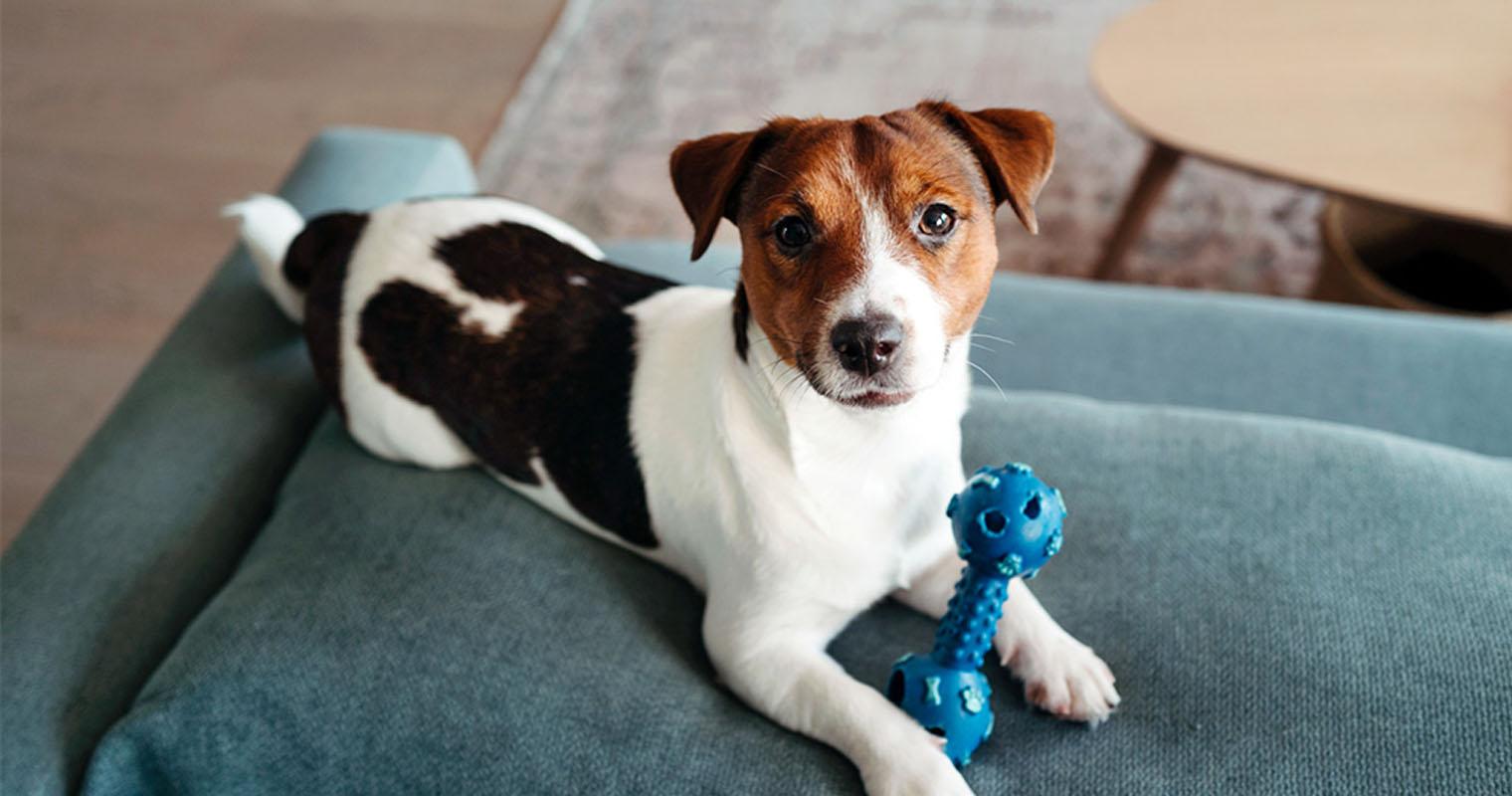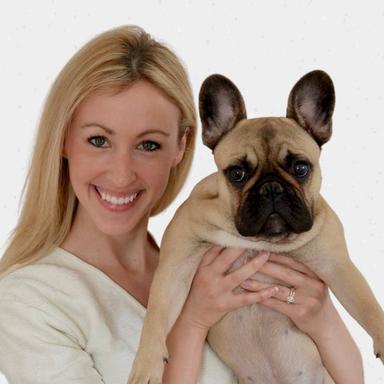How To Puppy Proof Your Home Before Adoption
Preparing for a new puppy? Learn how to puppy proof your home and create a safe environement for your new puppies first days at home.
Preparing for a new puppy? Learn how to puppy proof your home and create a safe environement for your new puppies first days at home.
by Courtney Elliott, | March 2, 2023

Irina Polonina / Stocksy
If you've adopted a rescue dog, you may be eager to start your new life together. But before you dive into all the fun, there are a few things you'll need to check off on your list as a new pet parent. This includes stocking up on supplies, such as food, toys, and a leash, creating a safe space for your new dog, establishing house rules and training commands, and preparing both your human and four-legged family members, to name a few. Here's everything you need to know to get ready for your new rescue dog.
Finding the right dog to adopt is the first step, but that's only the beginning. Follow these tips before bringing home a rescue dog, and you're set up to reap all the benefits pet parenthood has to offer.
Welcoming a new rescue dog into your home is an experience that involves everyone in the family — including other pets. To ensure a smooth transition, it's helpful to plan out pet-related chores together so everyone is involved in caring for your new rescue dog.
Assign and schedule walks, grooming sessions, and training exercises.
Align the whole family on a daily and weekly plan to create consistency and routine for your newly adopted dog.
Teach kids and adults the importance of gentle interactions and respecting the dog's boundaries.
For existing pets, create cozy spaces and safe zones where they can retreat if needed.
Plan to slowly introduce existing pets to the new dog in a controlled manner, allowing time for positive interactions.
Before your new dog enters your front door, it's important to have all the supplies they'll need to stay happy and healthy in their new home. Every dog should have a collar, leash, ID tag, food and water bowls, a crate, and at least a few toys. You should also make sure you have basic grooming supplies on hand, such as nail clippers, a brush or comb, and shampoo. And lastly, you'll want to have essential training supplies ready so you can start practicing those commands from the get-go. A harness, treats, and a clicker (if you want to do clicker training) are a great place to start. Oh, and don't forget those poop bags.
While most dogs see a couch as another cozy cuddle spot, some might view it as an enticing chew toy or scratching pad. Needless to say, if you don't prepare your furniture for your new pup, it can take a big hit. Consider investing in durable, pet-friendly furniture covers or blankets to protect your sofas and chairs from potential muddy paws or playful antics.
Training and positive reinforcement are key; reward good behavior and gently discourage unwanted habits. Some pet parents opt for bitter apple spray to help eliminate chewing on furniture. For safety purposes, it's advisable to secure taller furniture, such as dressers, to the wall to prevent any accidental tipping during lively moments of exploration.
When bringing home a rescue dog, it can be easy to forget about your floors, but this part of your home can present major safety issues if not taken into account. Start by identifying areas with floors that you'd prefer to keep paw-print-free, and consider using gates or barriers to keep your dog from going into those zones. For staircases, secure non-slip carpets with pet-friendly tape to prevent any accidental slides. Sweep and vacuum to ensure floors are free from debris and tiny, sharp objects that may be dangerous for curious pups.
Creating a cozy and safe haven for your new rescue dog is like setting up their very own VIP lounge. Start with a comfy crate, lined with soft blankets to provide a snug retreat. Make sure there's a water bowl within paw's reach and a few quiet and safe toys to keep them entertained. Lastly, ensure the space is at a comfortable temperature, especially during extreme weather. This retreat should be a place where they can feel safe, secure and in control.
Craft a training plan for your new rescue dog before they come home to really set them up for success. Decide who in the family will take the lead on training responsibilities and consider whether hiring a professional trainer is a good fit for your dog's unique needs.
Use training methods that promote positive reinforcement, such as clicker training, to make learning a happy experience for both you and your dog. Establish a consistent routine, incorporating short, fun sessions to keep things engaging. And finally, clearly outline your training goals. Whether it's mastering basic commands, addressing specific behaviors, or fostering a deeper bond, having a shared training vision ensures everyone is on the same page.
Routine is one of the most important ways to make a dog feel safe and secure. When they know what to expect, it creates a comforting rhythm to their day, provides them with a sense of predictability, helps build trust, and reduces anxiety. Start by establishing regular times for feeding, walks, training, and play sessions. Routine is especially important for rescue dogs who may feel stressed in a new environment, so the more consistency you can create, the better.
When it comes to doing their business, potty area management can go a long way in helping them stay consistent. Begin by choosing a specific spot in your yard, preferably away from high-traffic areas. Introduce your pup to this space during bathroom breaks, using positive reinforcement when they go potty there. Regularly clean the area to maintain a fresh environment, encouraging your pup to return when it's time to go next. Remember, consistency is key.
Aside from preparing your floors and furniture for your new family member, there are other areas of your home that should be dog-proofed.
Keep potentially toxic items such as certain foods, medications, and cleaning supplies safely stored.
Invest in sturdy trash cans with secure lids to prevent any impromptu scavenger hunts.
Keep doors and windows closed and locked to prevent escapes.
Use gates and barriers to block off any unsafe areas of the home.
Once you've done that, take a walk through your home from a dog's-eye view, looking out for tempting cords, small objects that might be mistaken for toys, or anything else that could turn into an unintentional chew toy.
Adopting a dog from a rescue is one of the most rewarding things you can do, but signing those adoption papers is just the first step. From the moment they walk through your door, it's important to be patient with them as they navigate their new life in your home. Keep your routines and expectations consistent, providing a stable environment where they can gradually build trust and feel secure.
Just like humans, dogs need time to adjust and form bonds. So, celebrate small victories, from mastering a new command to moments of genuine connection. By being patient and consistent, you'll see your rescue dog transform into your BFF.
When it comes to dog adoption, the first thing you should do is choose a rescue dog that fits with your lifestyle and needs. Age, size, behavior, temperament, and underlying health conditions all play a role in this decision. And consider enrolling in basic obedience training classes to strengthen the bond between you and your new dog.
The adjustment period for a rescue dog varies based on individual factors such as their background, experiences, and temperament, but expect to see big changes over the first three months. Some dogs may settle in quickly, while others might take a few weeks or even months to feel completely at ease. Be patient and understand that your rescue is adapting to a new environment, routine, and family.

Courtney Elliott, a proud Cleveland native living in Manhattan, blends her decade of writing and editing expertise with her unshakable devotion as a pet parent to her French Bulldog, Gus. When she’s not at her desk, you’ll find her frolicking in Central Park or engrossed in a good book at a local coffee shop.